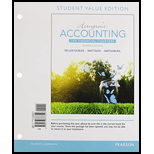
1)
Introduction:
Classes of shares:
• Shares provide partial ownership or a “share” of a corporation. There are two primary classes of shares – Equity Shares and Preference Shares.
• Equity shares are the class of shares which carry voting rights and equity share holders are the true owners of the company as in the event of dissolution, equity shareholders get last preference in clearing the amounts invested and there is no guarantee of profits / dividend on an annual basis.
• Preference shares are the class of shares which do not carry voting rights and in the event of dissolution, preference shareholders get first preference in clearing the amounts invested and there is usually guarantee of profits / dividend on an annual basis.Convertible Preference shares are preference shares that carry the option to be converted into equity shares after certain duration.
Which classes of shares are outstanding
2)
Introduction:
Calculation of Par value of Shares
• Shares provide partial ownership or a “share” of a corporation. There are two primary classes of shares – Equity Shares and Preference Shares.
• Preference shares are the class of shares which do not carry voting rights and in the event of dissolution, preference shareholders get first preference in clearing the amounts invested and there is usually guarantee of profits / dividend on an annual basis.Convertible Preference shares are preference shares that carry the option to be converted into equity shares after certain duration.
• Par value of shares refers to the face value or book value of the shares issued. The difference between issue price and par value is the discount or premium on shares.
To Calculate:
Par Value of
3)
Introduction:
- Journal entries are the first step in recording financial transactions and preparation of financial statements.
- These represent the impact of the financial transaction and demonstrate the effect on the accounts impacted in the form of debits and credits.
- Assets and expenses have debit balances and Liabilities and Incomes have credit balances and according to the business transaction, the accounts are appropriately debited will be credited by credited to reflect the effect of business transactions and events.
To Prepare:
Summary Journal entries to record issuance of all stock.
4)
Introduction:
Journal Entries
- Journal entries are the first step in recording financial transactions and preparation of financial statements.
- These represent the impact of the financial transaction and demonstrate the effect on the accounts impacted in the form of debits and credits.
- Assets and expenses have debit balances and Liabilities and Incomes have credit balances and according to the business transaction, the accounts are appropriately debited will be credited by credited to reflect the effect of business transactions and events.
To Prepare:
Journal Entries for Issuance and payment of Dividend
Want to see the full answer?
Check out a sample textbook solution
Chapter 13 Solutions
Horngren's Accounting, The Financial Chapters, Student Value Edition Plus MyLab Accounting with Pearson eText -- Access Card Package (11th Edition)
- Get accurate solution of this general accounting questionarrow_forwardEXCELSIOR COMMUNITY COLLEGE HOSPITALITY MANAGEMENT ACCOUNING MID-SEMESTER ACCT4301 UNIT 2 Section A of this assessment is to be done on Canvas Section B Answer all questions in this section - round off your answers to two decimal places Instructions: Responses should be written on paper. Take a CLEAR, WELL-LIGHTED picture of each page, the upload to Canvas. 1. The following information relates to Moonlight Hotel 2018 2019 $ change % change Net sales 1,818,500 1,750,000 Cost of Goods Sold 1,005,500 996,000 Operating profit 813,000 754,000 Selling and administrative expenses 506,000 479,000 Income from operations 307,000 275,000 Other expenses and losses Interest expenses 18,000 19,000 Income before income taxes 289,000 256,000 Income tax expenses 86,700 77,000 Net Income 202,300 179,000 Required: i. Use the above information to prepare the comparative analysis income statement.arrow_forwardComplete the table below with the infomation given - FlagStaff Ltd has a defined benefit pension plan for its employees. The company is considering introducing a defined benefit contribution plan, which will be available to all incoming staff. Although the defined benefit plan is now closed to new staff, the fund is active for all employees who have tenure with the company. In 2020, the following actuarial report was received for the defined benefit plan: 2020/$ Present value of the defined benefit obligation 31 December 2019 18 000 000 Past Service Cost 4 000 000 Net interest ? Current service cost 600 000 Benefits paid 2 000 000 Actuarial gain/loss on DBO ? Present value of the defined benefit obligation 31 December 2020 21 000 000 Fair value of plan assets at 31 December 2019 17 000 000 Return on plan assets ? Contributions paid to the plan during the year 1 500 000 Benefits paid by the plan during the year 2 000 000 Fair value of plan assets at 31 December…arrow_forward

 AccountingAccountingISBN:9781337272094Author:WARREN, Carl S., Reeve, James M., Duchac, Jonathan E.Publisher:Cengage Learning,
AccountingAccountingISBN:9781337272094Author:WARREN, Carl S., Reeve, James M., Duchac, Jonathan E.Publisher:Cengage Learning, Accounting Information SystemsAccountingISBN:9781337619202Author:Hall, James A.Publisher:Cengage Learning,
Accounting Information SystemsAccountingISBN:9781337619202Author:Hall, James A.Publisher:Cengage Learning, Horngren's Cost Accounting: A Managerial Emphasis...AccountingISBN:9780134475585Author:Srikant M. Datar, Madhav V. RajanPublisher:PEARSON
Horngren's Cost Accounting: A Managerial Emphasis...AccountingISBN:9780134475585Author:Srikant M. Datar, Madhav V. RajanPublisher:PEARSON Intermediate AccountingAccountingISBN:9781259722660Author:J. David Spiceland, Mark W. Nelson, Wayne M ThomasPublisher:McGraw-Hill Education
Intermediate AccountingAccountingISBN:9781259722660Author:J. David Spiceland, Mark W. Nelson, Wayne M ThomasPublisher:McGraw-Hill Education Financial and Managerial AccountingAccountingISBN:9781259726705Author:John J Wild, Ken W. Shaw, Barbara Chiappetta Fundamental Accounting PrinciplesPublisher:McGraw-Hill Education
Financial and Managerial AccountingAccountingISBN:9781259726705Author:John J Wild, Ken W. Shaw, Barbara Chiappetta Fundamental Accounting PrinciplesPublisher:McGraw-Hill Education





